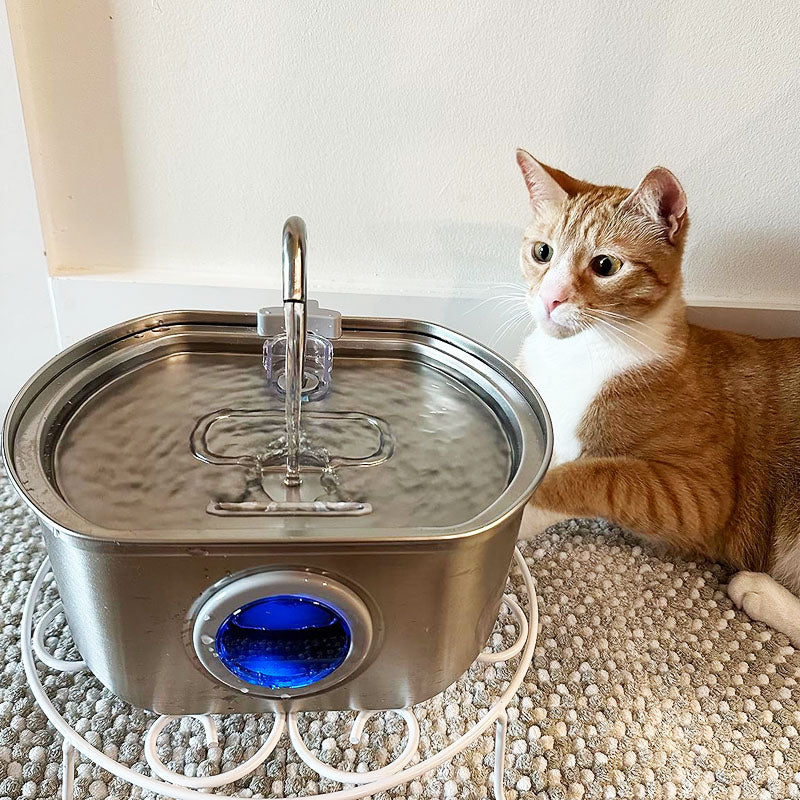
The First 30 Days With Your Kitten: A Complete Kitten Care Guide
Share
The First 30 Days With Your Kitten: A Complete Kitten Care Guide
Bringing home a kitten is one of life’s sweetest joys. Those wide eyes, wobbly paws, and bursts of playful energy are irresistible. But along with the excitement comes a big responsibility: keeping your kitten safe, healthy, and comfortable.
This kitten care guide walks you through the first 30 days—feeding, hydration, litter training, health signals, and building routines that set the stage for a happy life.
How Do I Prepare My Home for a Kitten?
Kitten-proofing basics
Kittens explore with teeth and paws. Before you bring one home, check for:
- Toxic plants (lilies, aloe, philodendron).
- Cords and wires that look like toys.
- Small items (hair ties, rubber bands) that can be swallowed.
Creating a safe space
Your kitten needs a corner that feels like home. Set up:
- A soft bed
- A litter box in a quiet area
- Food and water bowls (or better, a stainless steel cat fountain)
- A scratching post
What Should I Feed My Kitten in the First Month?
The right kitten food
Kittens need high-protein, calorie-rich food to grow. Choose a vet-recommended kitten formula—wet, dry, or a mix—and avoid sudden diet changes.
Do kittens need fresh water every day?
Yes. Hydration is as important as food. Kittens often don’t drink enough, especially if fed mostly dry food. Keep clean water available at all times.
Why not use plastic bowls?
Plastic scratches easily, trapping bacteria and often leading to feline acne (black spots on the chin). Stainless steel or ceramic bowls are safer. A stainless steel pet water fountain encourages more drinking and is far easier to clean.
What Routines Should I Start With a Kitten?
Feeding schedule
Offer 3–4 small meals a day. Consistency builds security and prevents overeating later.
Playtime and enrichment
Play is learning. Wand toys, tunnels, and puzzle feeders give exercise and mental stimulation.
Litter training
Most kittens learn fast. Keep the box clean, place it in a quiet spot, and use positive reinforcement if accidents happen.
How Can I Tell If My Kitten Is Healthy?
Skin and coat
A healthy kitten has a shiny, soft coat. Redness, bumps, or a dirty chin may signal acne, parasites, or allergies.
Activity levels
Healthy kittens alternate between wild bursts of play and long naps. Sudden lethargy is a red flag.
Vet visits
Book a check-up within the first two weeks. Your vet will cover vaccines, flea prevention, and wellness checks.
Making Life Easier for You and Safer for Your Kitten
The right tools simplify kitten care. A dishwasher-safe stainless steel fountain prevents bacterial growth, keeps water fresher, and helps avoid feline acne. A silicone feeding mat keeps food and water from spilling onto your floors.
These upgrades don’t just save time—they also protect your kitten’s health during the most important stage of their life.
Final Word
The first 30 days with a kitten shape their future health and habits. By kitten-proofing your home, feeding well, ensuring hydration, and watching for health signals, you’ll give your new companion the best possible start.
And when it comes to safe, hygienic essentials, stainless steel and food-grade silicone are always the better choice.